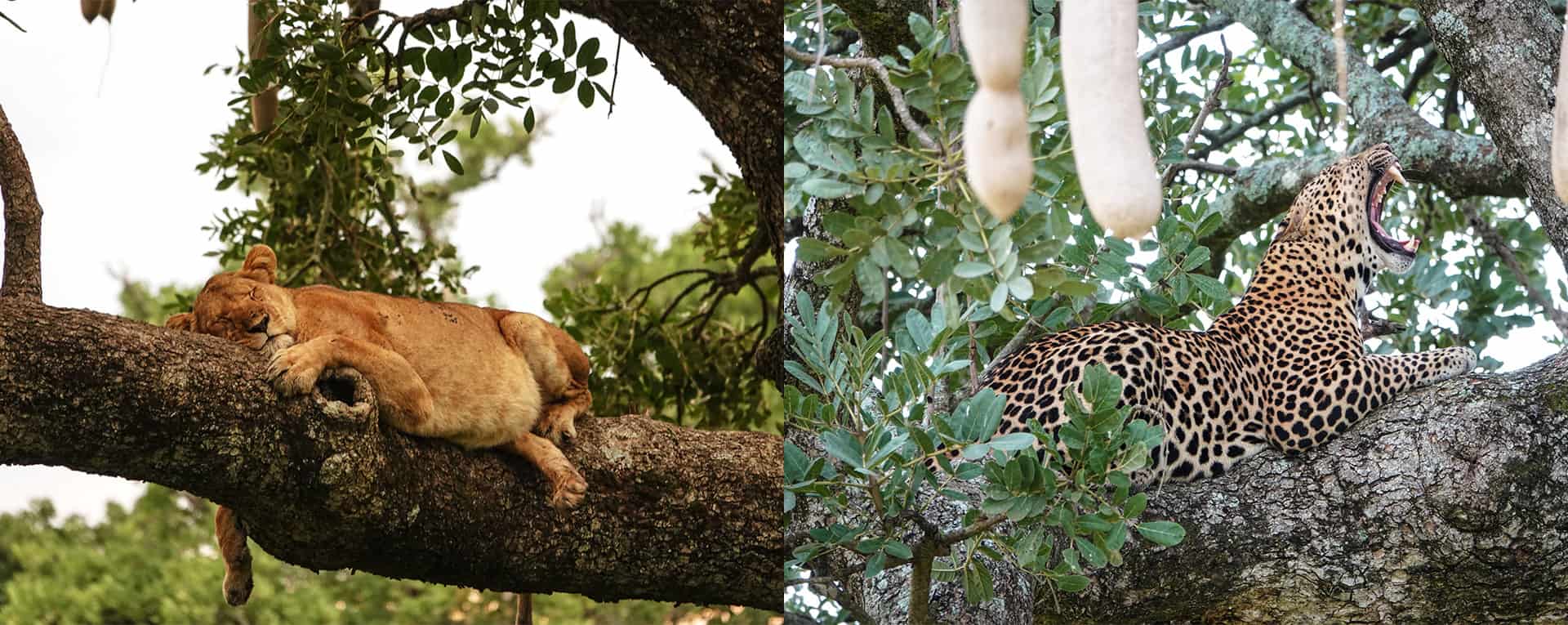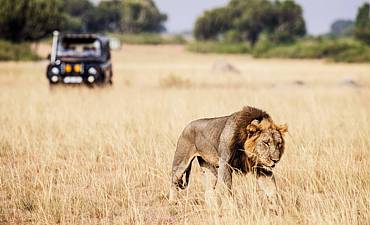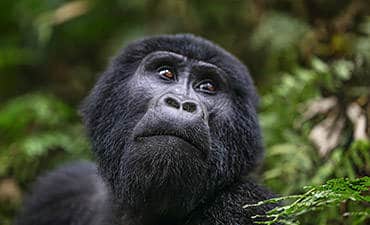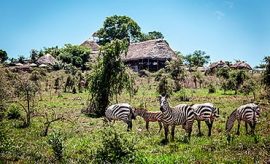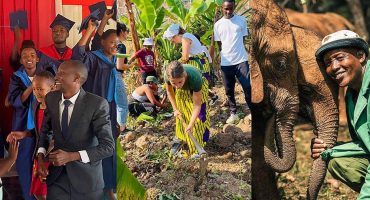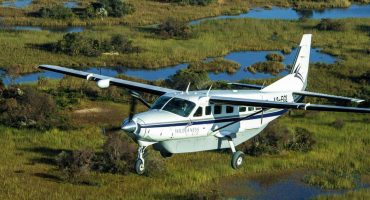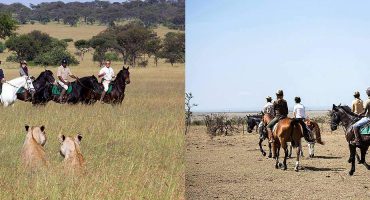SAFARI GUIDE ON KIDEPO VALLEY NATIONAL PARK IN UGANDA
Kidepo Valley Park Introduction - Location, Wildlife & History
The beauty of Kidepo Valley National Park is bound to take your breath away, despite its generally arid conditions. A desolate wilderness, the park captivates with its sprawling savannah grasslands, dotted with rocky crags, sausage trees, and acacia trees. Covering an area of 1442 square kilometers, the park does not feature prominently on the African tourist circuit, a factor that only adds to its allure. You will revel in the serenity of visiting environs that aren’t prone to drawing large, noisy crowds of safari holiday tourists. Kidepo Valley National Park (where to stay) lies at the northernmost corner of Uganda and comprises the Morungole highlands, bordered by the Kidepo Valley and Narus Valley. Both of the rivers that carved out these valleys are seasonal in nature, flowing only during the wet season.During the dry season, the Kidepo River leaves behind beds of light brown sand that you can explore this part of Uganda on a walking safari excursion. You can also see the copses of Borassus, Kigelia, and other riverine vegetation that thrive beside the pools left behind by the vanishing seasonal river. Surprisingly, abundant wildlife thrives in these arid-like conditions. Your AfricanMecca assigned guide will talk to you about some of the 77 species of mammals that can be seen here, including four of the Big Five of Africa: the lion, leopard, buffalo, and elephant. Kidepo National Park also hosts more than 475 kinds of birds, 60 of which cannot be spotted in any other location in Uganda e.g. Bwindi, Kibale, Queen Elizabeth, Murchison Falls etc. When traveling in the park, you are likely to find a higher concentration of animals in the Narus Valley, since it has more of the pools and swamps where they can drink.
Altitudes in Kidepo Valley National Park range from 914 meters to 2750 meters above sea level, with the Apoka area lying in the heart of the park and Mount Morungole forming its highest point. Much of the landscape is covered by semi-desert vegetation, including open thorn-bush, open thorn-scrub, and both long and short grasses. Safari photography travelers who are enthusiastic who choose to vacation in this remote wilderness of Uganda will be delighted by the kaleidoscope of contrasting colors the park presents: blue skies, green and golden grasses, red termite mounds, and the rich hues of the wildlife that abound.
Key Takeaways
- Heart-breakingly beautiful, desolate landscape with savannah grasslands dotted with sparse vegetation
- Home to a surprisingly rich diversity of wildlife that thrives in these regions. 77 species of mammals, 475 kinds of birds, of which 60 can only be seen in this park
- Tranquil and serene vacation destination with low tourist crowds
- Located on the northernmost area of Uganda and includes the Morungole highlands. Watered by two seasonal rivers that create the Kidepo Valley and Narus Valley
- Photographer’s paradise displaying a kaleidoscope of colors that are truly spectacular to see
Watch Video On Kidepo Valley Safari Experiences
Travel Guide Content - Start Here
| 1. What Are The Wildlife Experiences In Kidepo Valley National Park? |
| What Are The Areas Of Interest In Kidepo Valley National Park |
| 2. Exploring Kidepo Valley’s Scenic Ecology |
| 3. Narus Valley’s Wilderness Oasis |
| 4. Visiting The Borassus Palm Forests & Kanangorok Hot Springs |
| 5. The Vistas Of Mount Morungole |
| 6. The Birding Hotspot Of Namamukweny Valley |
| 7. The Tribal Lands Of Kidepo |
| 8. Kidepo Safari Activities & Tour Experiences |
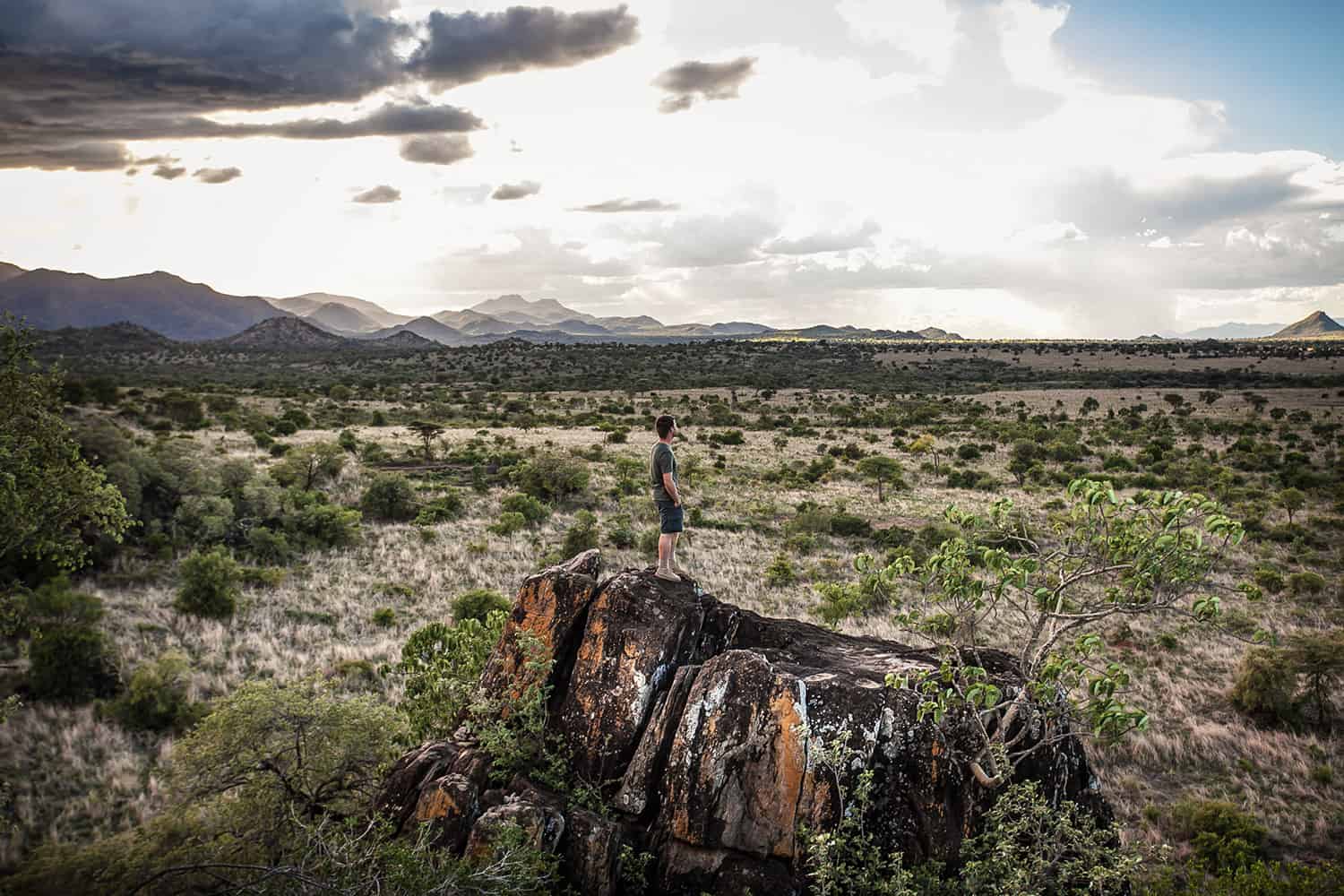 |
1. What Are The Wildlife Experiences In Kidepo Valley National Park?
Key Takeaways
- 77 species of mammals, 475 kinds of birds, of which 60 can only be seen in this park
- Four of the Big Five of Africa can be seen here
- A higher concentration of wildlife in the Narus Valley thanks to a number of pools and swamps
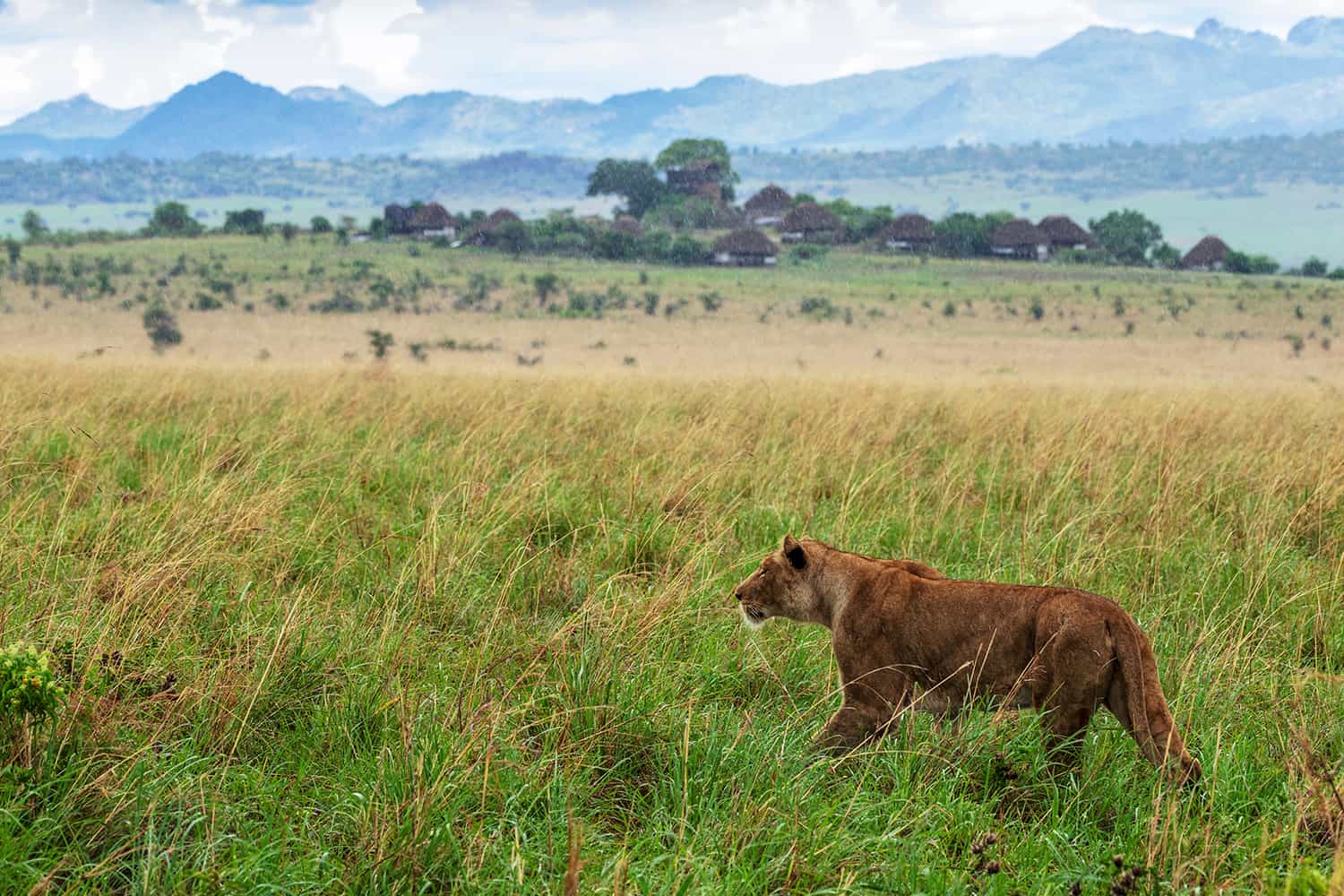 |
What Are The Areas Of Interest In Kidepo Valley National Park?
2. Exploring Kidepo Valley’s Scenic Ecology
Key Takeaways
- Drives along the dry beds of the Kidepo Valley and Narus Valley to admire the striking sand river
- Trail passes through Apoka and cuts through rocky kopjes before dipping into the valley and plains
- Kanangorok Hot Springs known for its sightings of ostriches foraging for food
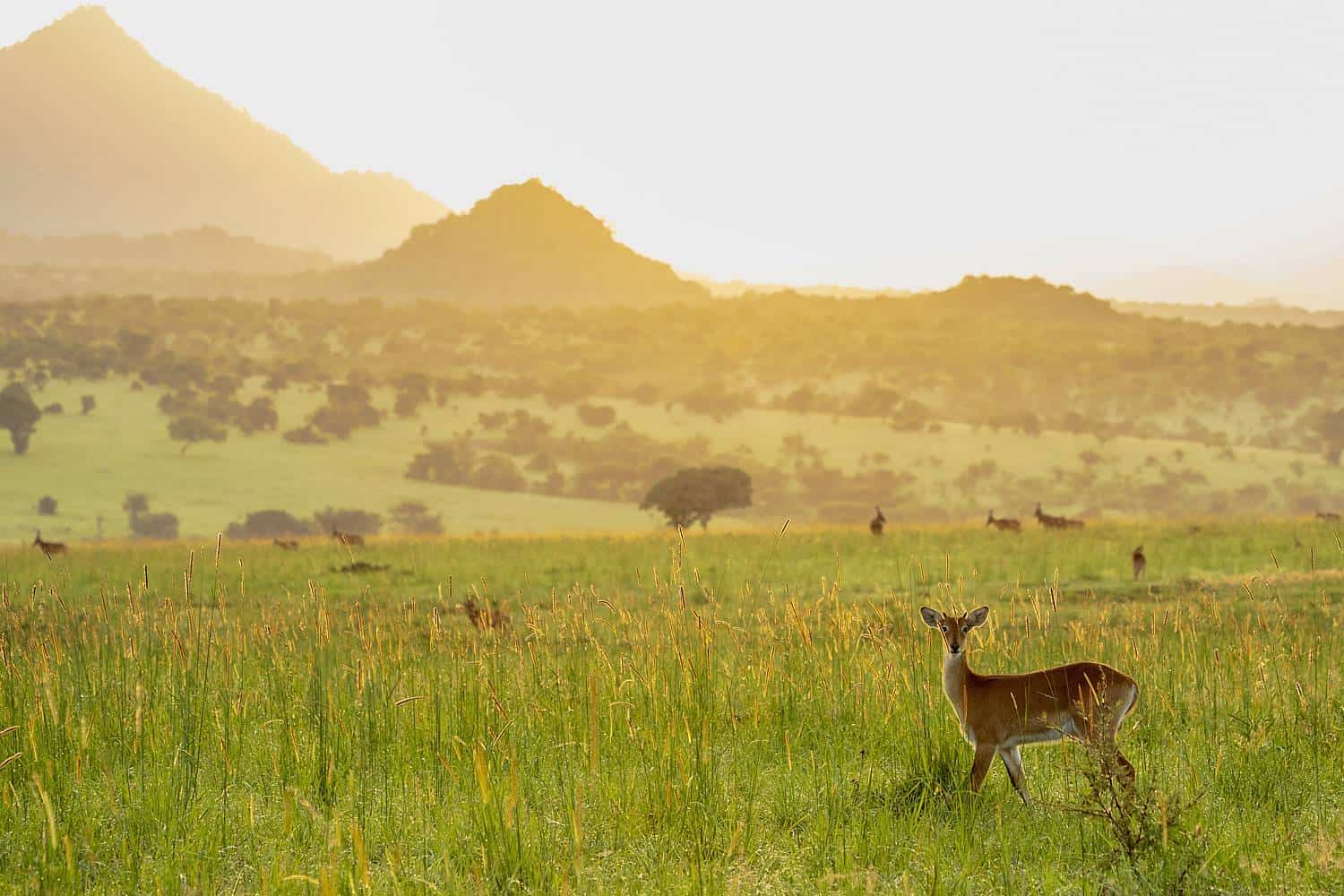 |
3. Narus Valley’s Wilderness Oasis
Key Takeaways
- Nestled in the highlands and magnet for wildlife all year round thanks to water sources
- Four game drives tracks for spotting big cats and their game prey
- Drives to Katurum kopje for spell-binding views of the Morungole Mountains
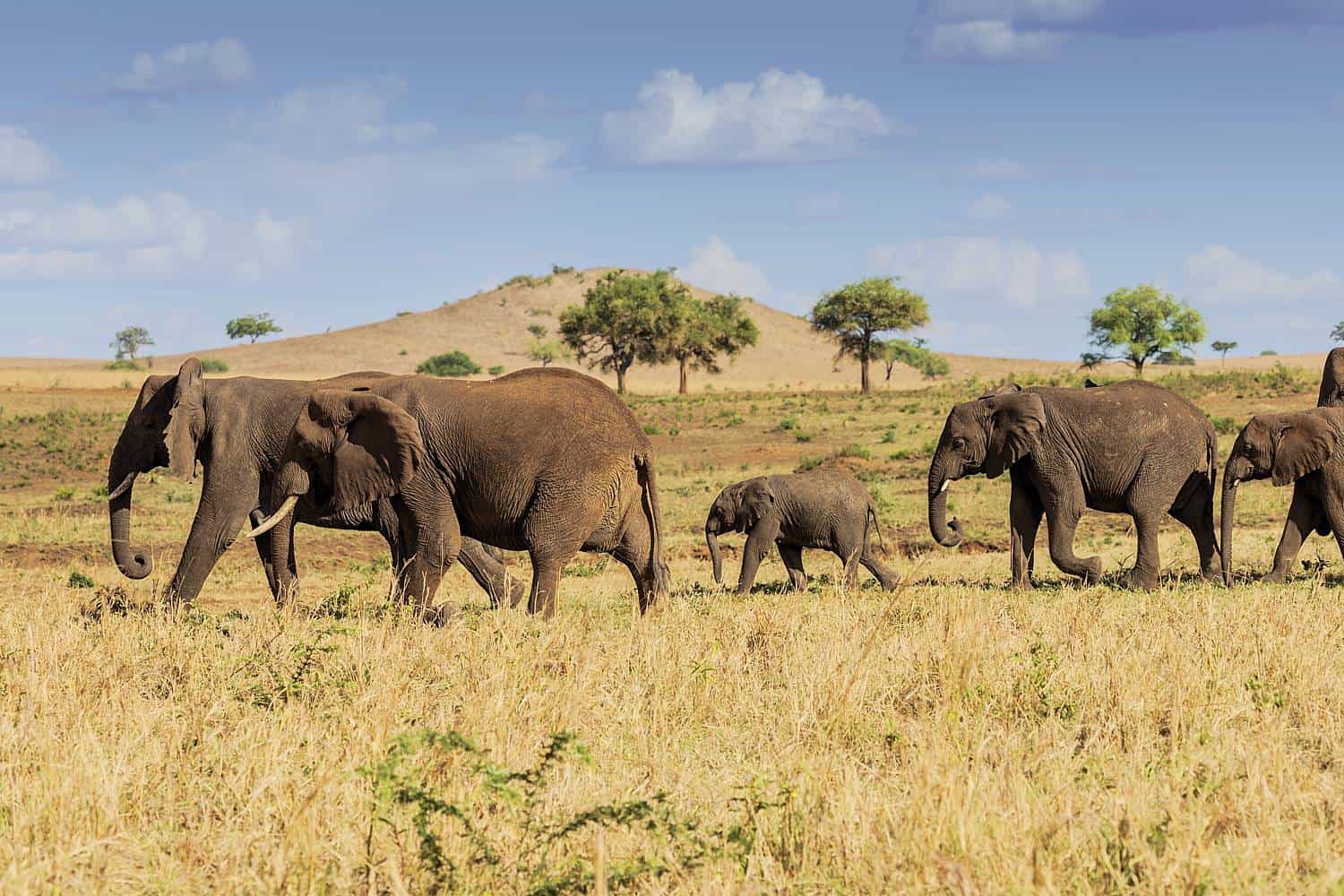 |
4. Visiting The Borassus Palm Forests & Kanangorok Hot Springs
Key Takeaways
- Region for the scenic sand river beds that are visible in the dry seasons
- Walking tours to the Borassus palm forests where the Borassus fruit is harvested, which is used for making fermented palm beer
- Kanangorok Hot Springs that can be reached with an 11-kilometer trek through scenic locales
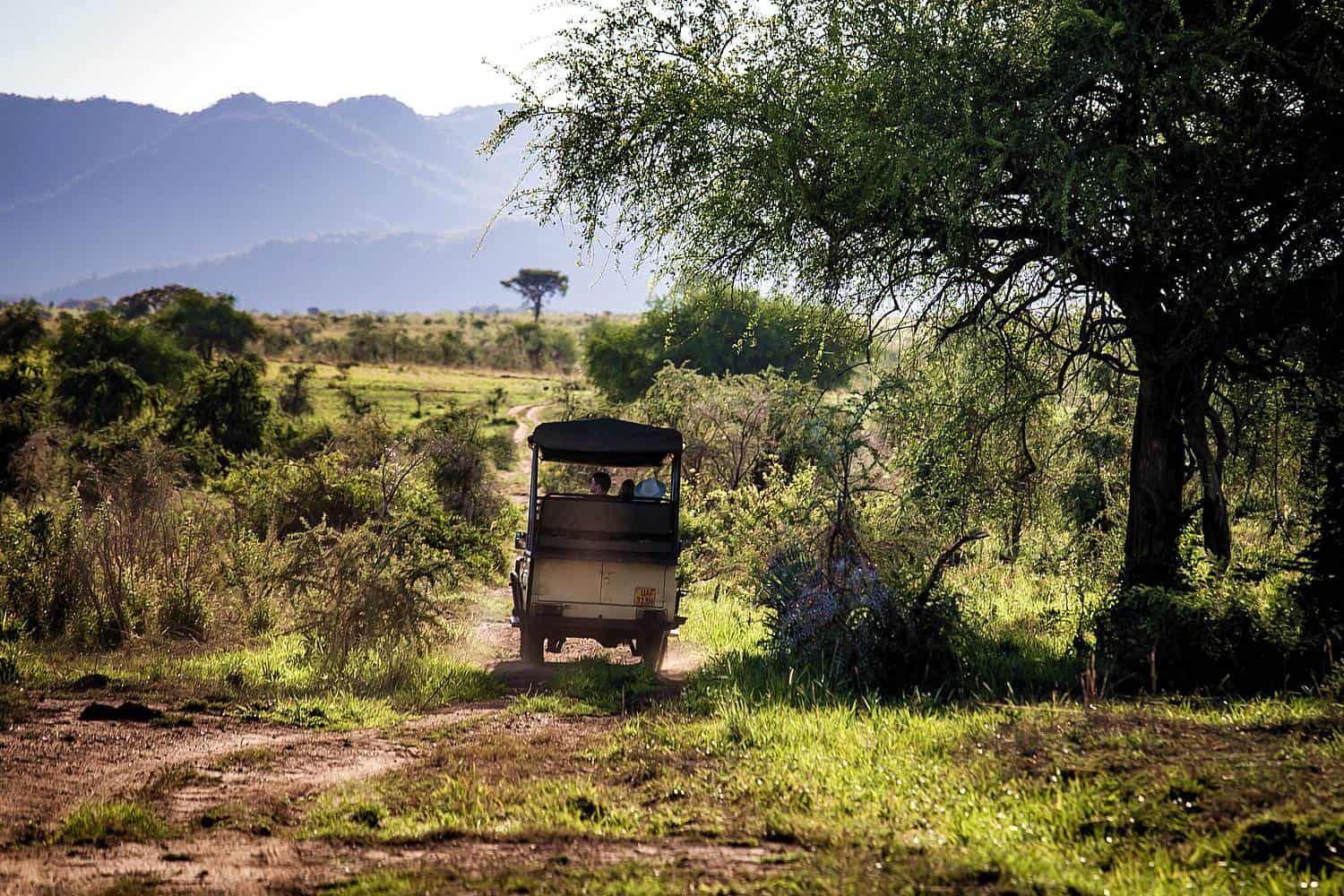 |
5. The Vistas Of Mount Morungole
Key Takeaways
- Mount Morungole marking the highest point in the park at 2750 meters above sea level
- Seasonal Kidepo River and Narus River flowing through the ranges during the wet seasons
- Home to the elusive Ik people with a unique culture
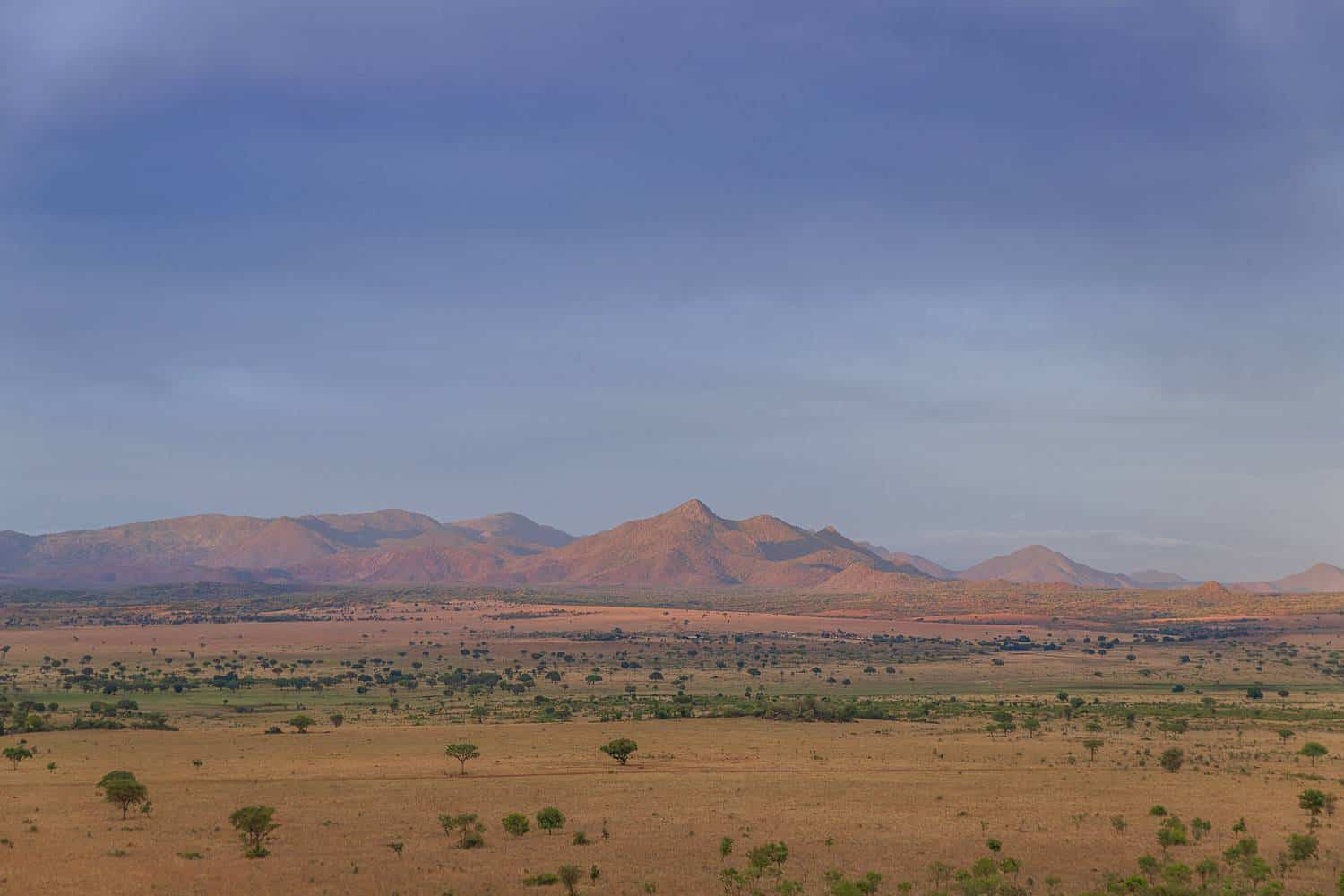 |
6. The Birding Hotspot Of Namamukweny Valley
Key Takeaways
- Taking its name from the Napore language meaning, “a place with no birds” or “a lonely place with few people”
- Teeming with birdlife and prime birdwatching locale
- Area can be explored by way of walking tours
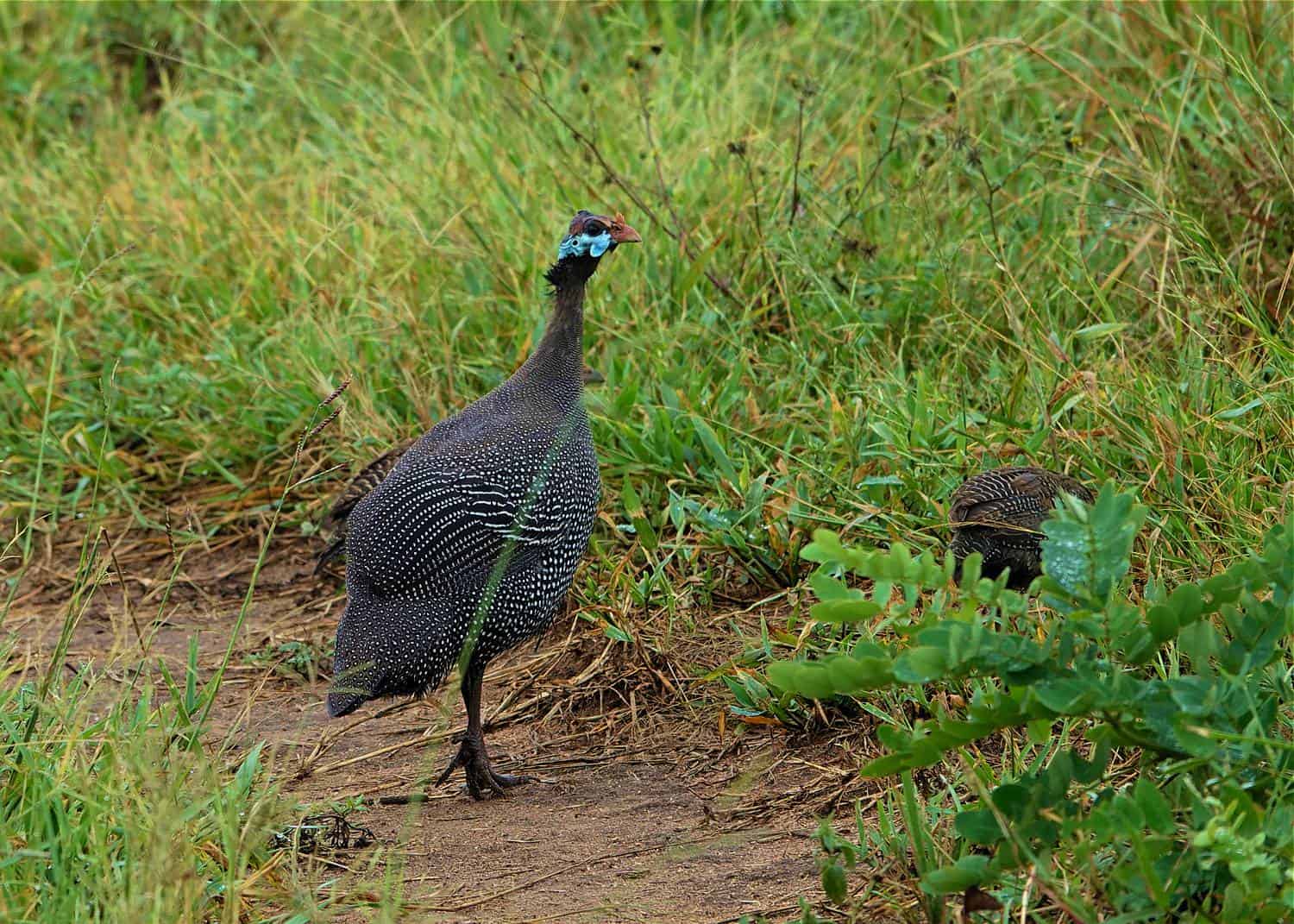 |
7. The Tribal Lands Of Kidepo
Key Takeaways
- Home to the Karamoja people who are cattle owners and subsistence farmers
- Ik tribe living on the slopes of Mount Morungole following a hunter-gatherer lifestyle
- Several walking trails to spot the varied birdlife and superb vistas of the park
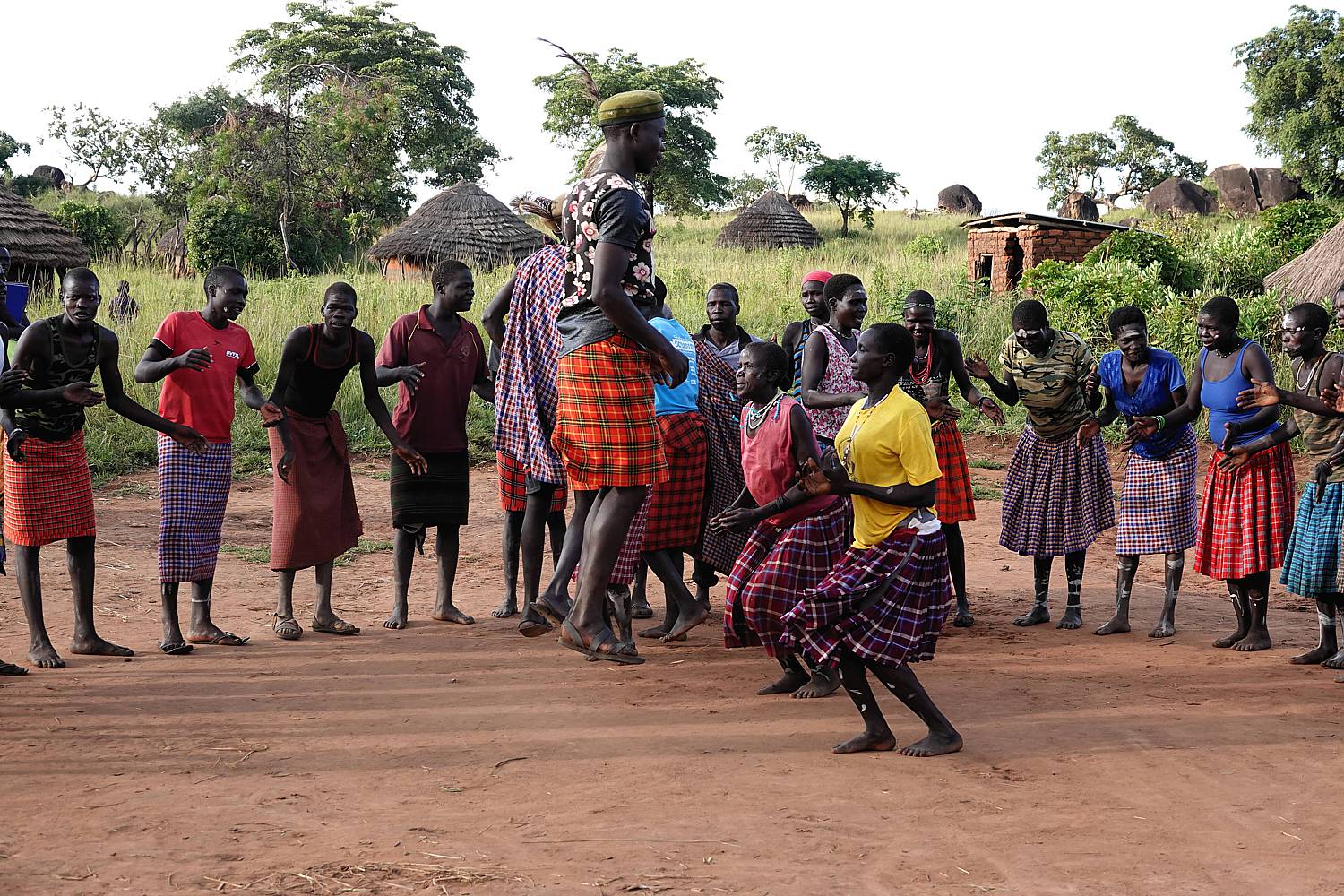 |
Select Our Highly Recommended & Unique Designed Uganda Safaris & Gorilla Treks That You Want To Tour Visit & Experience
What Safari Attractions & Tour Activities To Experience During Your Kidepo Valley Visit?
Key Takeaways
- Captivating landscape with green and gold savannah plains teeming with grazers and predators
- Fabulous sand river beds, broken by swamps and pools where wildlife flocks to drink
- Walking along the trails looking for some of 475 species of avian life, some of which are endemic only in Kidepo
- Kanangorok Hot Springs and Lomej Mountain explorations
- Namamukweny Valley, yet another prime location for sighting beautiful birds, and hiking up Morungole Mountains for cultural interactions with the Ik tribal people
As you stroll along the trails, you can enjoy photographing some of the more than 475 species of birds you’ll find on your travels here, some of which are not found in any other park in Uganda. Most trails take you from the park headquarters into the Kidepo Valley. Along the way, you’ll be treated to vistas of the brown-sand bed of the seasonal Kidepo River, which dries up during the dry season. Close by are the Kanangorok Hot Springs, another scenic spot. You will also be exploring the Lomej Mountains. You can also go on drives in the valley and, perhaps, spot ostriches foraging for food in the semi-arid conditions of Kidepo.
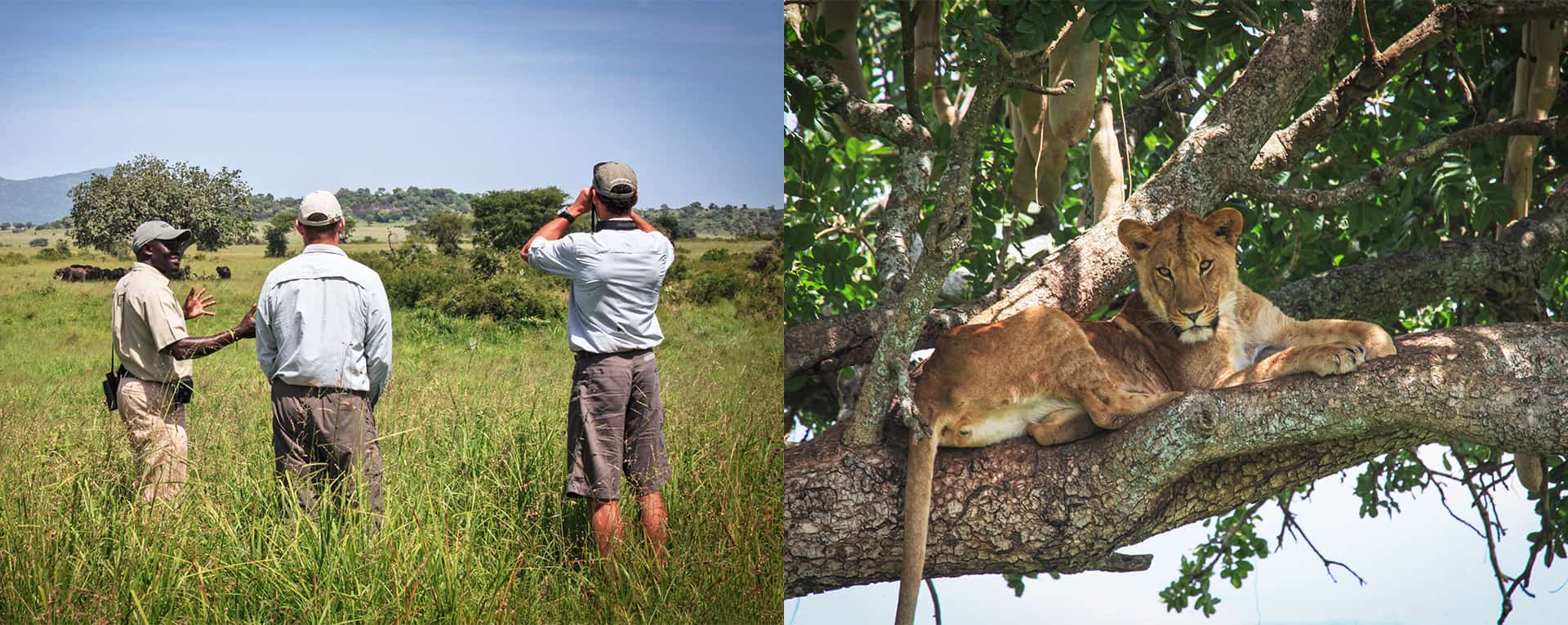 |
On your cultural tour in Uganda, you can visit the communities close to the lodge to experience their traditional dance and music performances. You can expect to be regaled by performances such as the Emuya dance-song of the Nyangia and Naporre ethnic groups, and the Larakaraka and Apiti dances of the Acholi people.
Watch Video On Kidepo Valley Safari Experiences
Our Top 4 Safari Activities In Kidepo Valley - Things You Can Do & See
Activities Content - Start Here
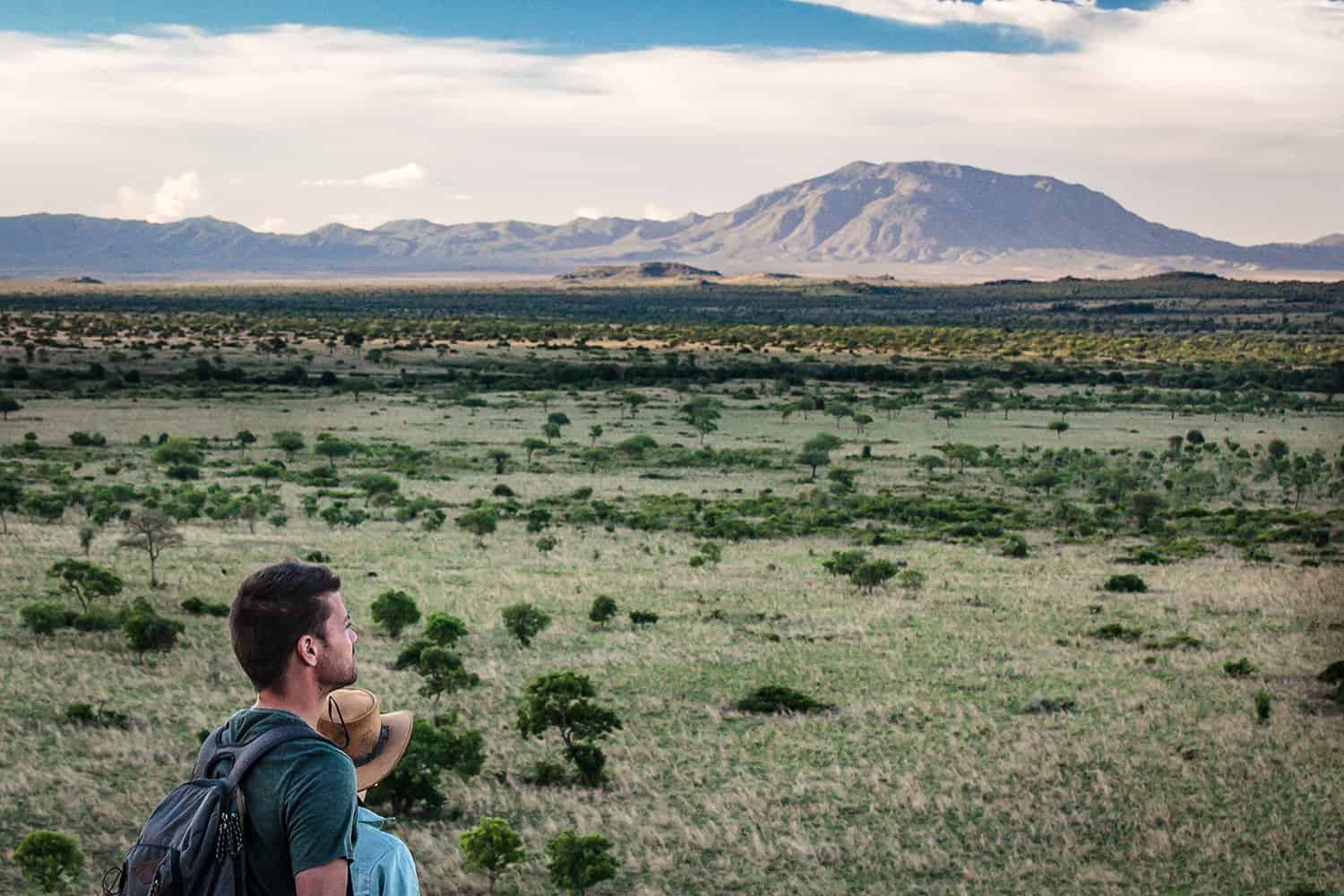 |
1. Game Drives To View The Diverse Wildlife Of Kidepo Valley
Key Takeaways
- Game drives in the mornings and afternoons to look for wildlife including four of the Big Five of Africa
- 77 species of mammals, 28 of which can be spotted only in Kidepo in Uganda
- View nocturnal creatures that come out to feed in the cover of twilight
Also look for the other ungulates and grazers that live in Kidepo Valley (best time to visit): species such as the bush duiker, bushbuck, oribi, eland, bush pig, Defassa waterbuck, Bohor reedbuck, Rothschild giraffe, Jackson’s hartebeest, Burchell’s zebra, klipspringer,kongoni, and warthogs. Among the smaller predators, you will see the side-striped jackal, caracal, striped hyena, cheetah, bat-eared fox, hunting dog, spotted hyena, black-backed jackal, and aardwolf, along with various smaller cats. The Narus Valley is known for sightings of Guenther’s dik-dik, Senegal galago and Kavirondo bush baby. The white-tailed mongoose is often seen on twilight drives.
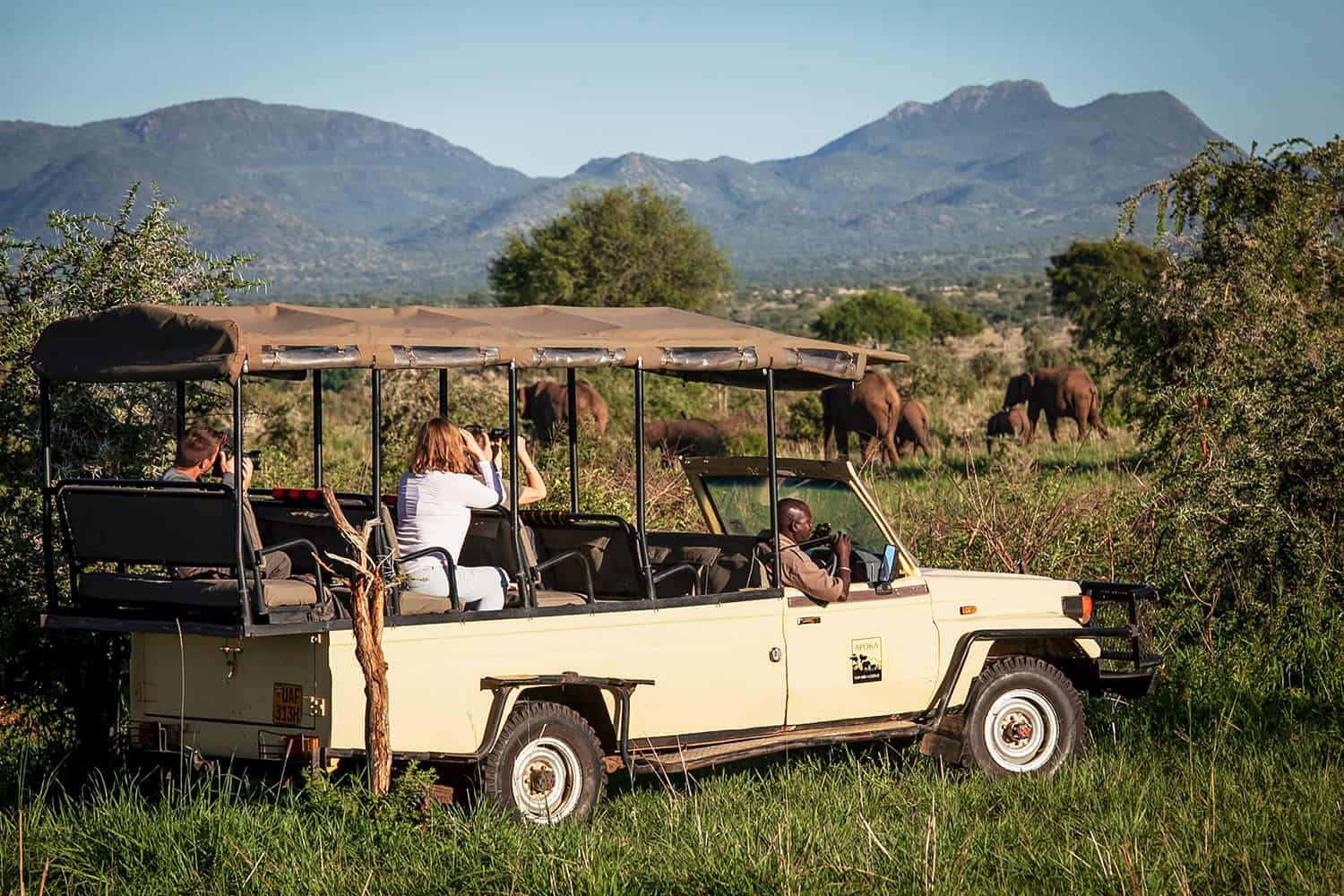 |
2. Birdwatching Safaris In Kidepo Valley
Key Takeaways
- Park is famous for sightings of 475 species of avian life
- Narus and Namamukweny Valleys known for fabulous birds that are a photographer’s dream
- Rare birds often spotted around the watering holes and swamps of the reserve
Among the rarer birds, you might spot the Karamoja apalis and black-breasted barbet, along with other commonly seen species like the crimson-rumped waxbill, marsh tchagra, African mustached and broad-tailed warblers, black coucal, yellow-rumped seedeater, four-banded sandgrouse, and various swallows. Many of these are often spotted around the watering holes of Kidepo.
Below is a list of some of the birds of Kidepo Valley National Park
|
|
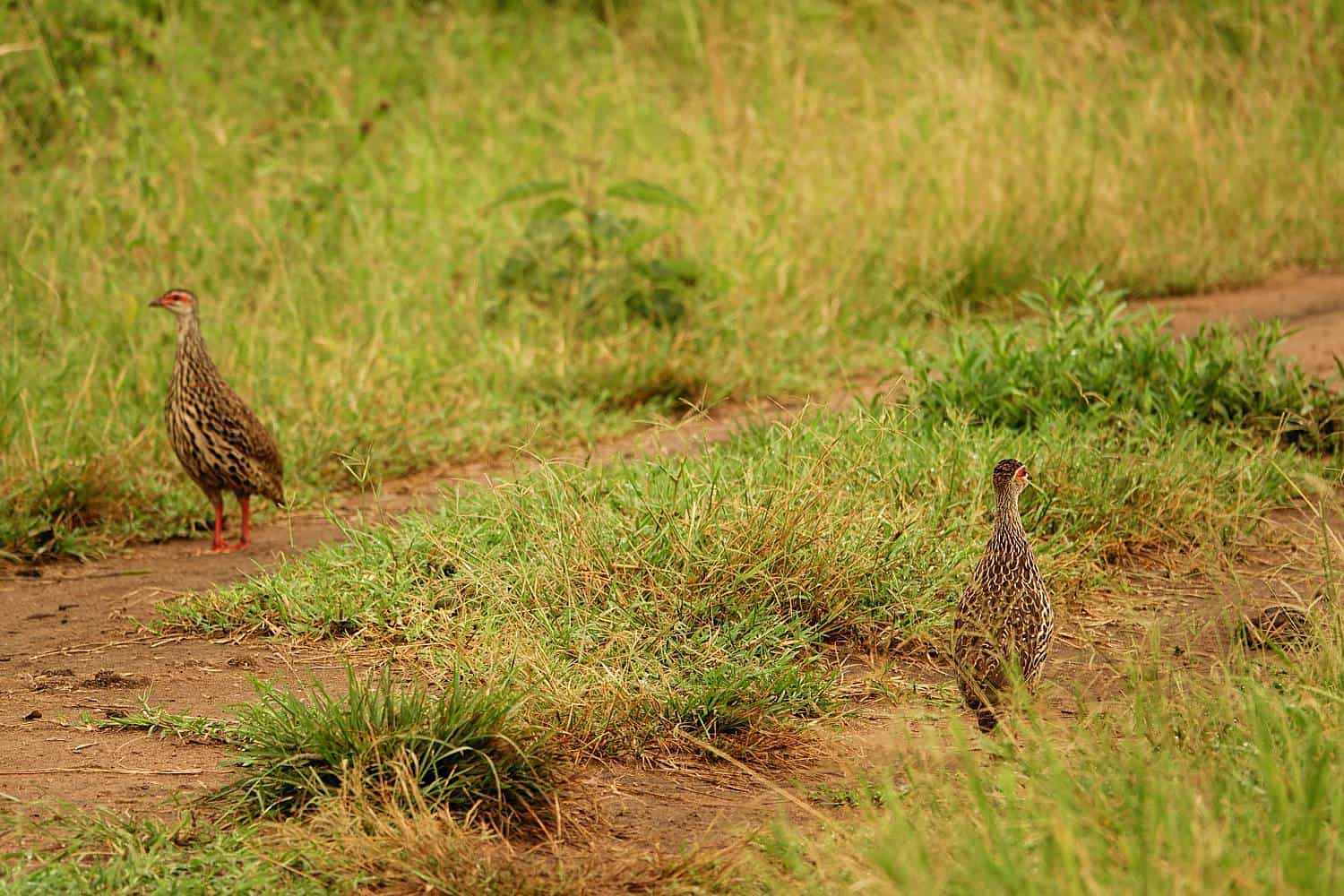 |
3. Hikes, Treks & Walking Safaris in Kidepo Valley
Key Takeaways
- Nature walks to spot small reptilian species hiding in the undergrowth
- Choice of walking trails according to the particular interest and fitness levels of visitors
- Range of landscapes and altitudes from valleys and savannahs to highlands
A walk to the Kidepo Valley will treat you to spectacular panoramas of light brown sand riverbed meandering among forests of Borassus palm. If you walk further, you will be able to reach the Kanangorok Hot Springs, a distance of 11 scenic kilometers (7 miles) from the valley. Yet another trekking tour can take you to the Morungole Mountains in the outskirts of Kidepo Valley National Park (where to stay), home of the Ik people. Given that the park is contained within highlands, you can spot the rocky Napore Nyagia mountain range standing on the west, while to the northeast are the Natira and Lokayot Hills. The Lotukei Mountains in Sudan are also visible from the park on the north.
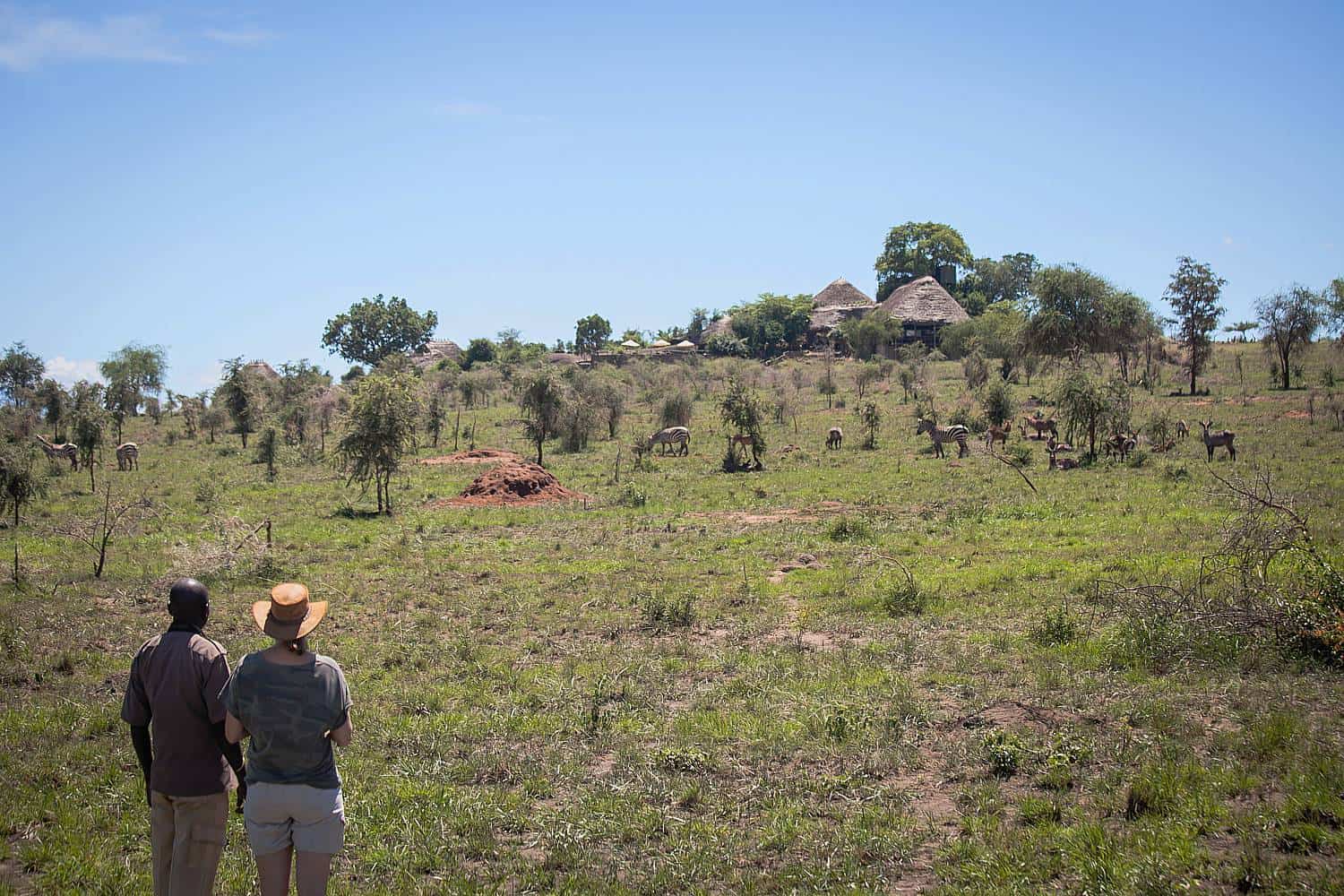 |
4. Karamojong & The Ik Cultural Safari - The Tribes Of Kidepo Valley
Key Takeaways
- Visit Uganda’s most remote tribes near the border of Kenya and South Sudan
- The Karamojong tribe are cattle herders, and have a similar culture to the Maasai tribe
- The Ik tribe are farmers who live up the Morungole Mountains. They sustain themselves through goat keeping, honey harvesting, and subsistence maize farming. Only 10,000 exist in the world.
The Karamojong are nomadic cowherds, and their entire livelihood is centered on their cattle. Most of their food comes from the blood and milk of the herds they own. When you visit their village in the outskirts of Kidepo Park, you can meet the people and take part in their daily activities. Hike up the Morungole Mountains for an introduction to the Ik people. In contrast to their brothers, the Karamojong, the Ik tribe practice farming as their main occupation and typically venture out of their villages only to exchange the grain they grow for other essentials.
The Karamojong Tribe
The Karamojong traveled to Uganda from Ethiopia sometime around 1600 and occupied the area around Mount Moroto. Today there are close to 1.2 million people living in Kidepo Valley National Park. Nomads and cattle-herders, the Karamojong belong to the Nilotic group, meaning from the Nile region. History says they acquired the name Karamojong, or Ngkaramojong, which translates to “the old tired men who stayed behind,” because they opted to settle on the borders of South Sudan and Kenya while their counterparts moved on.Warriors by nature, the Karamojong people have resisted urbanization and modern education and prefer to keep to their traditional beliefs and religion, which worships the god Akuj. They have always believed that their cattle are a gift from Akuj, which led to clashes over stolen cows with neighboring tribes living in the region of Kidepo Valley National Park who are also pastoralists. Before the peace agreements between the tribes, the clashes became violent and bloody because of the availability of weapons during the Uganda reign of Idi Amin.
As you will note on your cultural tour, in the Karamojong culture, cattle are considered wealth and the person owning the most cattle is considered the wealthiest. The male members of the tribe spend their time looking for greener pastures and fresh water for their cows, while the women stay home in the manyattas in Kidepo Valley Park. The manyatta is a permanent home where the women and girls grow a few crops, make sorghum flour, and produce traditional beer. Democracy prevails, with the younger warriors called Ngigetei meaning gazelles and the village elders are called Ngimoru meaning mountains.
When you tour the Karamojong village, you will note that the manyattas are simple structures with low doors that you may have to crawl into. Almost devoid of furniture and smeared with mud and cow dung, the homes offer respite from the intensely hot weather conditions of Kidepo Valley National Park. It is not uncommon for the men to have several wives, and they pay the bride price with cattle. Extended families live together in close-knit families, helping each other. To ease the heat, the women and children don’t wear much clothing. They also sport unique tribal markings.
The village elders, dressed in tunics, will welcome you on your vacation excursion and relate tales of yore. Spending time with them is an eye-opening experience that will make you feel like you have taken a trip to a part of Kidepo Valley Park that time forgot. And, while you are here, do take part in their jumping dances, which are lively and energetic.
The Ik Tribe
The Ik people, who speak the Teuso language, live in the Morungole Mountains of Uganda, on the northwestern border of Kenya in Kidepo Valley National Park. Also called the Mountain people, the Ik number fewer than 10,000 individuals today, and primarily practice subsistence farming. The Ik were among the first people to travel to Uganda from Ethiopia and thus earned the name “Ik,” which means “leaders of migration.” Because of their common origins, they share many characteristics with the Karamojong people. History has it that they were also originally cattle herders, but after losing their livestock to raiders from the neighboring tribes, such as the Tuposa of South Sudan, the Karamojong, and Turkana and Pokot of Kenya, they moved on to goat keeping, honey harvesting, and subsistence maize farming for a livelihood.The Ik also practiced hunting and gathering for food, but after the establishment of reserves such as the Kidepo Valley Park in the 1960s, they were barred from areas where they traditionally foraged for food. To protect their culture and survive in peace, they chose a spot in Mount Morungole where they now live, segregated from the rest of the tribes and communities. Should you opt for an authentic African cultural vacation expedition to their village, you will be rewarded with stunning views of the surrounding landscape and its natural beauty.
Similar to the Karamojong, the Ik men have several wives and pay the bride price in livestock such as chickens, goats, and beehives. All the mothers and grandmothers collectively care for the children. Modern education is rarely given, though this factor could change in the coming years. Although shy people, the Ik are now welcoming tourists to their village in Kidepo Valley National Park for the additional income they can make. This income does help them preserve their ways and prevent the tribe from becoming extinct.
The Ik people welcome visitors warmly with traditional dancing, often in their tribal dress. But getting to their village may present a bit of a challenge. The U.S. Forest Service has marked a trail that you can follow, and there is even a vehicle track that can shorten the trek. Keep in mind that you have to be in top physical shape for the 16-kilometer (10 miles) round trip since the climb is strenuous and steep. Even so, a visit to these unique people of Kidepo is a memorable experience, and will change your perception of the tribes and the culture that they preserve.
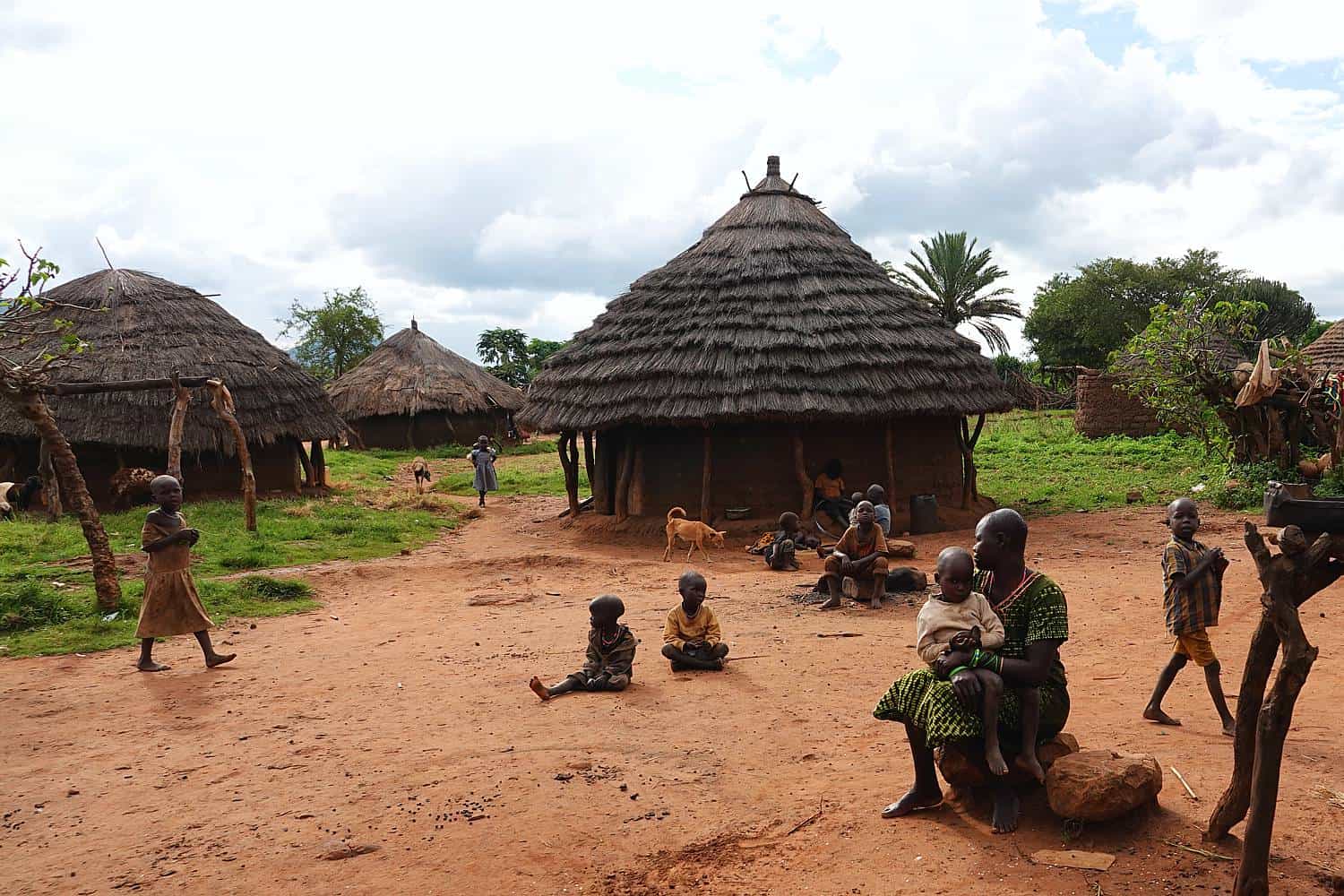 |
Select Our Highly Recommended & Unique Designed Uganda Safaris & Gorilla Treks That You Want To Tour Visit & Experience
|
Kidepo Valley Park Rating By AfricanMecca
4.8
Star
Wildlife Exclusivity Activities Accommodations Authenticity
Users
(0 votes)
0
|
Learn More On AfricanMecca Safari Tier Ratings & Experiences |
Write A Trip Review On Kidepo Valley In Uganda
Read More +
WHERE & BEST PLACES TO STAY IN KIDEPO VALLEY
Kidepo Valley has limited quality camps and lodges. AfricanMecca only recommends Apoka Safari Lodge that affords a rustic luxury Premier Tier 1 Safari rating. It offers a pleasing, hospitable ambiance.
Read More +
KIDEPO SAFARI ACTIVITIES & TOUR ATTRACTIONS
Kidepo is a wilderness park that captivates visitors with its seemingly endless plains, grazing animals, and gorgeous birds. You will have the opportunity to view the amazing creatures during game drives or walks.
Read More +
BEST TIME TO VISIT KIDEPO VALLEY PARK
The typical weather conditions at Kidepo Valley are different from the usual in Uganda. This is primarily due to the hot semi-arid climate based on its location. September to February are the best times to visit.
AFRICANMECCA REVIEWS
What are our Customers saying about us? READ MORE REVIEWS
AfricanMecca Safaris offers incredibly knowledgeable and skilled services! Our travel arrangements for 2 months of volunteering with TEACH Rwanda in country were made quickly and economically. Honored to work with Raza!
Janet Brown - TEACH Rwanda Founder - United States
I just returned from a month in Africa, specifically Rwanda & Kenya. I am left breathless with my experience. AfricanMecca Safaris coordinated the entire trip for me and left no detail, nothing for me to do.
Carol Bobb - Pennsylvania, United States
AfricanMecca Safaris created a remarkable honeymoon tailored to our interests and desires. The quality of service and delivery of experience was unsurpassed. I highly recommend AfricanMecca Safaris to honeymooners, families, or any traveler.
Noorin & Jason Nelson - Maryland, United States
I booked my safari holiday through AfricanMecca. They were the most helpful company I have ever dealt with and I work within the travel industry. I had the most amazing time. The holiday went as clockwork with no hitches anywhere.
Shelley Roberts - Hemel Hempstead, United Kingdom
This is to let you know my guests, The Bryant's, had a wonderful time on the trip Samburu, Masai Mara/Kenya, Chobe/Botswana & Victoria Falls/Zambia. Everything was perfect! Thank you.
Christine Milan - MT Carmel Travel - Connecticut, United States
We have returned from our African adventure and would like to thank you very much for your part in making this such a wonderful experience. We were lucky enough to time the Great Migration from the Serengeti, which was amazing.
Denise Paterson - Belmont, Australia
Rwanda was amazing. The accommodations, food, and guides AfricanMecca arranged were great. Raza also helped us through the complicated process of getting permits for gorilla trekking. AfricanMecca is a fantastic company to work with.
Stephanie Weir - United States
EAST AFRICA SAFARI BOOKING TRIP IDEA FOR KIDEPO VALLEY IN UGANDA
When visiting Kidepo for your wildlife safari, we recommend combining it with Bwindi Park for your gorilla safari trek, Queen Elizabeth, Murchison Falls and Kibale (chimpanzee safari) alongside your city tour visits of Kampala and Entebbe.
You may optionally extend out to other wilderness areas such as Mgahinga to track down golden monkeys and gorillas in the same park, Jinja for whitewater rafting on the Nile River, and Semliki or Lake Mburo for an offbeat wildlife tour.
You can end your vacation on the beach at Lake Victoria or even extending out to the exotic spice island of Zanzibar or Lamu, or even Mombasa.
Best Safari Planning Ideas & Trip Experiences For Uganda
Below are guide references on how to plan each of the below safari experience in Uganda. Alternatively, go to the summary section for a quick overview of each trip planning experience.1. How To Plan Uganda Safari Trips? (Summary)
2. Wildlife Safari Trip Planning Guide For Uganda
3. Private & Tailor-Made Safaris Trip Planning Guide For Uganda
4. Honeymoon Safaris Trip Planning Guide For Uganda
5. Family Safaris Trip Planning Guide For Uganda
6. Luxury Safaris Trip Planning Guide For Uganda
7. Photo Safaris Trip Planning Guide For Uganda
8. Cultural Safaris Trip Planning Guide For Uganda
9. Gorilla, Chimpanzee & Primate Safaris Trip Planning Guide For Uganda
10. Hike, Trek & Bush Walk Safaris Trip Planning Guide For Uganda
11. Birding Safaris Trip Planning Guide For Uganda
12. Wedding Safaris Trip Planning Guide For Uganda
READ MOREKickstart Your Safari Planning
ARE YOU PLANNING TO BOOK AN AFRICAN SAFARI TO KIDEPO VALLEY IN UGANDA?
Do You Need Knowledgeable, Experienced & Specialist Guidance For Your Travels In Kidepo Valley ? Let Us Help Plan Your Trip Itinerary Correctly
CONTACT AN AFRICA TRAVEL EXPERT ON KIDEPO VALLEY NATIONAL PARKEXPLORE MORE ON KIDEPO VALLEY NATIONAL PARK IN UGANDA
HAVE YOU VISITED KIDEPO VALLEY FOR AN AFRICA SAFARI IN UGANDA?
Write A Travel Or Tourist Trip Review To Share Your Experiences
WRITE KIDEPO VALLEY REVIEWAMS BLOG
VIEW ALL -- 24 December 2024 by AfricanMecca Safaris, in Blog For AfricanMecca Safaris,Safari Planning Blog Posts - AfricanMecca Safaris
What AfricanMecca Accomplished In 2024
What AfricanMecca Accomplished In 2024 Published By AfricanMecca Safaris | Blog ...READ MORE + - 26 October 2017 by AfricanMecca Safaris, in Blog For AfricanMecca Safaris,Safari Planning Blog Posts - AfricanMecca Safaris
Baggage Guidance & Restrictions On Flying Safaris In Africa
Baggage Guidance & Restrictions On Flying Safaris In Africa Published By Afr...READ MORE + - 07 June 2017 by AfricanMecca Safaris, in Blog For AfricanMecca Safaris,Latest Kenya Blog Posts From AfricanMecca Safaris,Safari Planning Blog Posts - AfricanMecca Safaris
Masai Mara Horseback Riding Safari In Kenya With AfricanMecca
Masai Mara Horseback Riding Safari In Kenya Published By AfricanMecca Safaris | ...READ MORE +

